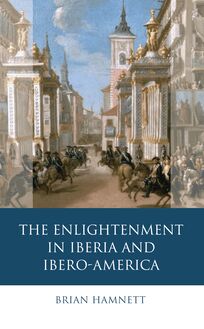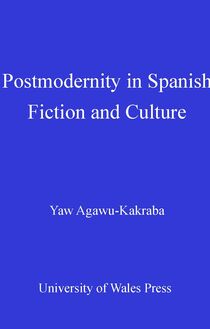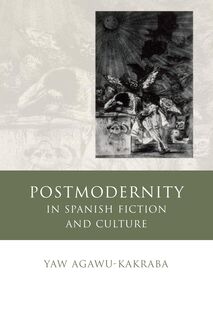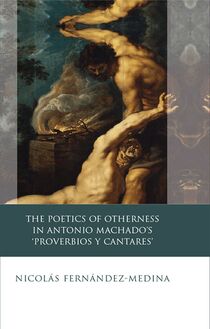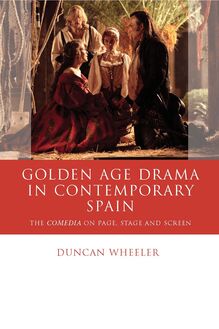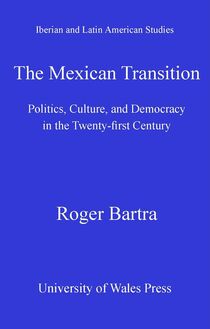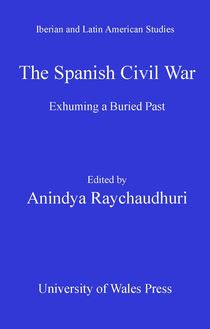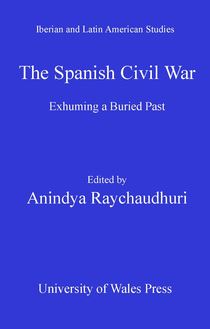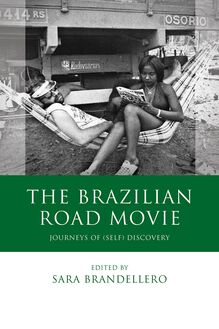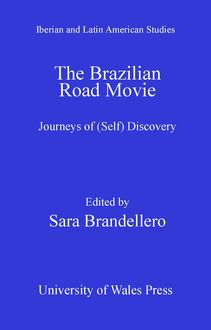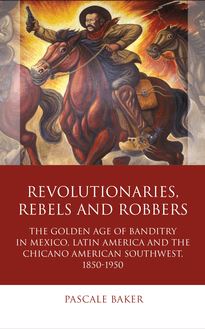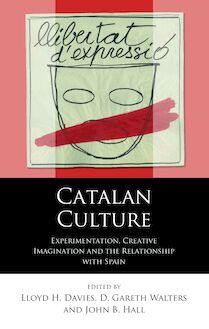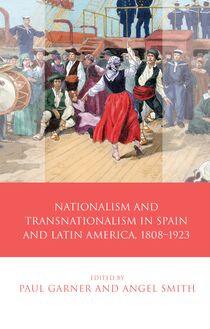-
 Univers
Univers
-
 Ebooks
Ebooks
-
 Livres audio
Livres audio
-
 Presse
Presse
-
 Podcasts
Podcasts
-
 BD
BD
-
 Documents
Documents
-
- Cours
- Révisions
- Ressources pédagogiques
- Sciences de l’éducation
- Manuels scolaires
- Langues
- Travaux de classe
- Annales de BEP
- Etudes supérieures
- Maternelle et primaire
- Fiches de lecture
- Orientation scolaire
- Méthodologie
- Corrigés de devoir
- Annales d’examens et concours
- Annales du bac
- Annales du brevet
- Rapports de stage
La lecture à portée de main
Vous pourrez modifier la taille du texte de cet ouvrage
Découvre YouScribe en t'inscrivant gratuitement
Je m'inscrisSex and Society in Early Twentieth Century Spain , livre ebook
Découvre YouScribe en t'inscrivant gratuitement
Je m'inscrisEn savoir plus
Vous pourrez modifier la taille du texte de cet ouvrage
En savoir plus

Description
Sujets
Informations
| Publié par | University of Wales Press |
| Date de parution | 15 septembre 2007 |
| Nombre de lectures | 0 |
| EAN13 | 9781783164899 |
| Langue | English |
Informations légales : prix de location à la page 0,0950€. Cette information est donnée uniquement à titre indicatif conformément à la législation en vigueur.
Extrait
IBERIAN AND LATIN AMERICAN STUDIES
Sex and Society in Early Twentieth-Century Spain
Series Editors Professor David George (University of Wales, Swansea) Professor Paul Garner (University of Leeds)
Editorial Board David Frier (University of Leeds) Lisa Shaw (University of Liverpool) Gareth Walters (University of Exeter) Rob Stone (University of Wales, Swansea) David Gies (University of Virginia) Catherine Davies (University of Nottingham)
IBERIAN AND LATIN AMERICAN STUDIES
Sex and Society in Early Twentieth-Century Spain
Hildegart Rodr guez and the World League for Sexual Reform
ALISON SINCLAIR
Alison Sinclair, 2007 Cover image: Photograph of Hildegart Rodr guez sent to Havelock Ellis; The British Library Board. All rights reserved. MS. ADD.70542
All rights reserved. No part of this book may be reproduced, stored in a retrieval system, or transmitted, in any form or by any means, electronic, mechanical, photocopying, recording or otherwise, without clearance from the University of Wales Press, 10 Columbus Walk, Brigantine Place, Cardiff, CF10 4UP. www.wales.ac.uk/press
British Library Cataloguing-in-Publication Data A catalogue record for this book is available from the British Library.
ISBN 978-0-7083-2017-4 eISBN 978-1-78316-489-9
The rights of Alison Sinclair to be identified as author of this work has been asserted by her in accordance with the Copyright, Designs and Patents Act 1988.
Jacket cover: Photograph of Hildegart sent by her to Havelock Ellis December 1932 . Photograph reproduced with kind permission of the British Library. The British Library Board. All rights reserved. Add.70542.
Frontispiece: Front cover of Sexualidad (1925-28) . Reproduced with kind permission of the Hemeroteca Municipal, Madrid.
Dedicated to the memory of Edith Lees
Contents
Series Editors Foreword
Acknowledgements
Introduction
Chapter One: The Face of Reform in Europe and the Spanish Case
Chapter Two: Conception of Reform
Chapter Three: Growing up under the Dictatorship
Chapter Four: Coming to Maturity and the Limits of Tolerance
Chapter Five: Hildegart s child , the Spanish Liga
Chapter Six: The Liga Speaks
Chapter Seven: Writing to the fairy god
Chapter Eight: Filicide: Perfection and Eugenic Death
Appendix I: Hildegart s Letters
Appendix II: Brief Bio-Bibliographical Guide to Figures Mentioned in the Text
Bibliography
Series Editors Foreword
Over recent decades, the traditional languages and literatures model in Spanish departments in universities in the United Kingdom has been superceded by a contextual, interdisciplinary and area studies approach to the study of the culture, history, society and politics of the Hispanic and Lusophone worlds categories which extend far beyond the confines of the Iberian Peninsula, not only to Latin America but also to Spanish-speaking and Lusophone Africa.
In response to these dynamic trends in research priorities and curriculum development, this series is designed to present both disciplinary and interdisciplinary research within the general field of Iberian and Latin American Studies, particularly studies which explore all aspects of Cultural Production ( inter alia literature, film, music, dance, sport) in Spanish, Portuguese, Basque, Catalan, Galician and the indigenous languages of Latin America. The series also aims to publish research on the History and Politics of Hispanic and Lusophone worlds, both at the level of region and that of the nation-state, as well as on Cultural Studies which explore the shifting terrains of gender, sexual, racial and postcolonial identities in those same regions.
Acknowledgements
This book would never have come into being had Tom Glick not introduced me to the work of Hildegart, and had I not had long conversations with Richard Cleminson on the world of sexual reform in which she figured so briefly. These conversations have continued throughout the drafting of this book. I am particularly grateful to the staff of the British Library, the University Library, Cambridge, and the Hemeroteca Municipal, Madrid. The support of friends and colleagues has been invaluable, and I would particularly like to thank Julia Biggane, Beatriz Caa amo, Angeles Carreres, Ivan Crozier, Richard Cleminson, Nigel Dennis, Philip Ford, Tom Glick, Lesley Hall, Bel n Jim nez, Jo Labanyi, Kurt Lipstein, Anja Louis, Roy Porter, Mike Richards, Francisco V zquez Garc a, Lorna Sinclair, Anne Summers and Sarah Wright. I would like to thank Simon Masterton for his assistance with the transcription of the letters and Maruja Rinc n for friendship, hospitality and conversation in Madrid. I am as ever indebted to my family for their tolerance and support.
I am especially indebted to Professor Fran ois Lafitte for his help and generosity in directing me to the location of the letters now in the British Library. The letters of Hildegart to Havelock Ellis are reproduced by permission of The British Library (ADD.70542). I am also grateful to the British Library for permission to reproduce the copy of their photograph of Hildegart from the Ellis collection for the jacket cover and to the Hemeroteca Municipal, Madrid, for permission to reproduce the front page of Sexualidad for the frontispiece.
I would like to acknowledge warmly the support of the British Academy (2001-3) for my Centres of Exchange project, and of which the exchanges between Hildegart and Havelock Ellis and the work on the dissemination of eugenics form a part.
Earlier versions of parts of this book have been given as conference papers at the Institute for Romance Studies, the MMLA, the Wellcome Institute, London, Hispanic Lesbian and Gay Studies (Bradford), Medical Anthropology Group of the Royal Anthropological Institute, and in seminars at the universities of Aberdeen, Cambridge, Lancaster, and Sheffield. I am grateful for permission to draw on articles published in the following three journals:
Hildegart: the Paradox of the Eugenic Dream , Journal of the Institute of Romance Studies 7: 127-44 (1999); The World League for Sexual Reform in Spain: Founding, Infighting and the Role of Hildegart Rodr guez , Journal of the History of Sexuality (University of Texas Press) 12(1): 98-109 (2003); Setting up the Interlocutor: Two Case Studies in the Construction of Self in 1930s Spain , Anthropology and Medicine 10(2): 223-238 (2003).
Introduction
In this book I set out to tell a double story. I track the development of movements concerned with sexual reform and eugenics in early twentieth-century Spain, and in order to do so with particular focus, I take a specific case history, namely that of Hildegart Rodr guez (1914-33) who came to be one of the central players in the Spanish chapter of the World League for Sexual Reform (WLSR). The book traces how Hildegart s conception, life and early death can be mapped in uncanny manner onto the rise, organization and decline of the Sexual Reform movement in Spain.
Hildegart was conceived deliberately in 1914 as a eugenic child (at a time when writing on eugenics was well under way in both England and Spain), and received her early education from her mother who in turn had received her own from her father s library, rich in works of utopian socialism. Subsequently and formally, Hildegart s education through the 1920s coincided with a period in Spain when writing on eugenics and sex reform became particularly intense. Her studies encompassed both law and medicine (favoured disciplines for those involved in the sex reform movement) and her teens provided a social education within the meetings and publications of the Campa a Sanitaria (Hygiene Campaign) of Navarro Fern ndez in the 1920s. Hildegart s own rise to a position of prominence in the world of eugenics and sex reform undoubtedly relates to her concentrated and impressive publishing activity from 1930 onwards, at a time when writings of others involved in sex reform also reached heightened activity. The coming of the Second Republic in 1931 further facilitated this publishing activity, and made possible the organization of the Spanish chapter of the WLSR in Spain (the Liga Mundial Para la Reforma Sexual) in March 1932 with Gregorio Mara n as its president, and the youthful Hildegart (age seventeen) as its secretary. 1 The Liga gathered together the groupings of hygienists, eugenicists, lawyers and educational reformers who were already part of a wider international scene, and who had been promoting ideas of eugenics and sexual reform in Spain for some time, and particularly through the 1920s.
Both Hildegart and the movements with which she was associated in Spain came to an untimely and premature end during the Second Republic. In June 1933, little more than a year after the Liga was founded, Hildegart was murdered by her mother, Aurora Rodr guez. It is hard to assert that this shocking event caused the death of the Liga but the movement in Spain seems not to have survived in coherent manner beyond 1933, although individual members continued to be active in various ways.
In telling this double story I have drawn on a striking record of the private life of Hildegart, one that illuminates issues of the movements with which she was associated, and that also allows us to gain some perception of her exceptional personal life. In October 1931 she wrote to Havelock Ellis, asking for advice on setting up the Spanish chapter of the WLSR. The correspondence developed far beyond the initial simple request for advice, and it lasted until a month before Hildegart s death. The letters include Hildegart s record of the foundation meeting of the Liga, and give details of discussion of the ten planks of belief of the WLSR, revealing the inbuilt power struggles between professional factions in the organization. At the same time as the letters provide this key documentation they provide something much more personal. Written (with one exception) in English, they are full of Hildegart s character:
-
 Univers
Univers
-
 Ebooks
Ebooks
-
 Livres audio
Livres audio
-
 Presse
Presse
-
 Podcasts
Podcasts
-
 BD
BD
-
 Documents
Documents
-
Jeunesse
-
Littérature
-
Ressources professionnelles
-
Santé et bien-être
-
Savoirs
-
Education
-
Loisirs et hobbies
-
Art, musique et cinéma
-
Actualité et débat de société
-
Jeunesse
-
Littérature
-
Ressources professionnelles
-
Santé et bien-être
-
Savoirs
-
Education
-
Loisirs et hobbies
-
Art, musique et cinéma
-
Actualité et débat de société
-
Actualités
-
Lifestyle
-
Presse jeunesse
-
Presse professionnelle
-
Pratique
-
Presse sportive
-
Presse internationale
-
Culture & Médias
-
Action et Aventures
-
Science-fiction et Fantasy
-
Société
-
Jeunesse
-
Littérature
-
Ressources professionnelles
-
Santé et bien-être
-
Savoirs
-
Education
-
Loisirs et hobbies
-
Art, musique et cinéma
-
Actualité et débat de société
- Cours
- Révisions
- Ressources pédagogiques
- Sciences de l’éducation
- Manuels scolaires
- Langues
- Travaux de classe
- Annales de BEP
- Etudes supérieures
- Maternelle et primaire
- Fiches de lecture
- Orientation scolaire
- Méthodologie
- Corrigés de devoir
- Annales d’examens et concours
- Annales du bac
- Annales du brevet
- Rapports de stage
